So, first, this video explains the experiment and set up (why You Tube insists on using the sheep for the thumbnail....??):
However, as the summer heat kicked in, and humidity in the greenhouse rose, the plants all got blight. Despite this, many of them continued to produce well. I shot two more videos, which I have combined into one you-tube clip: updates from 1st February 2015 and March 16th 2015.....
Tomato Experiment Results
I'm going to group the results two ways - first by variety, and then by growing medium. Weights given are in kilos, and are the total harvested weight from the given plant in that bucket. The easiest way for me to do this is to create tables in Word then import them as images - apologies if they are a bit fuzzy.
(I) stands for Indeterminate variety - keeps growing like a vine.
(D) stands for Determinate variety - grows into a bush, produces, then dies off.
Conclusions
No matter what growing medium one uses, though, consistent feeding over the life of the plant is the key to maximum returns!
Of course, one can't really draw final conclusions from this little experiment - to do that, one would need to grow more plants of the same variety in each growing medium, and have some in different conditions (eg outside as well as in the greenhouse).
What am I taking away from this personally? I won't be growing Roma or Silvery Fir Tree varieties again. Moneymaker is a good, reliable producer, but needs proper trellising set up to support it, and regular pruning/training. I don't personally like Box Car Willie as I don't like big, beefsteak type tomatoes. I do like Tigerellas, a stripey heritage variety, but again they need good trellising.
Growing in the greenhouse for some reason (possibly the very high temps at time) prevented the plants from getting infested with tomato-potato psyllid, which devastated my outdoor plants.
This summer I think I will grow just 2 Moneymakers in my greenhouse, in bigger pots filled with a quality potting mix, with better trellising and regular feeding. I will also grow some more smaller pots of determinate varieties Tiny Tim and Sub Artic Plenty. If I grow any outdoor tomatoes, they will have to be carefully covered in micro-mesh to keep out the psyllid. And maybe I'll also experiment with some other varieties. After all, where's the fun in gardening without some experimentation with new plants and/or ideas??

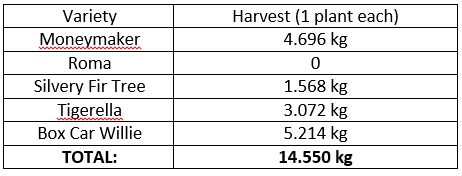
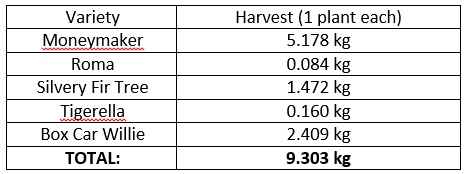
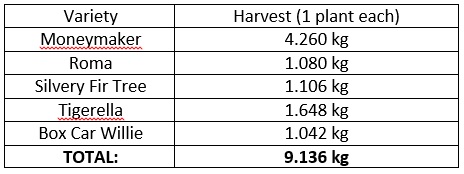
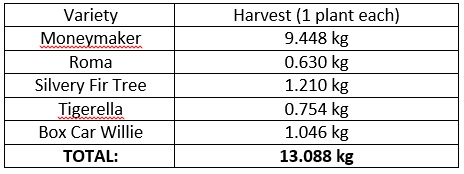

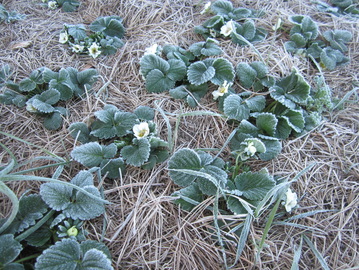

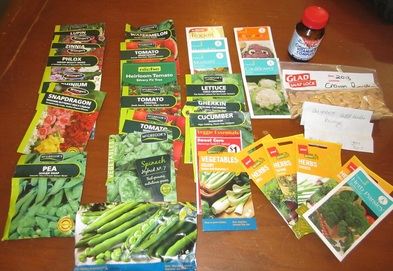

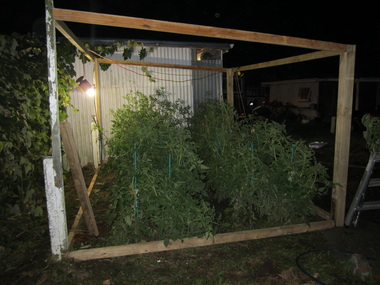
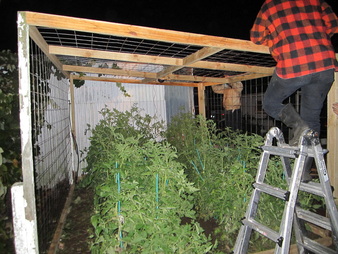
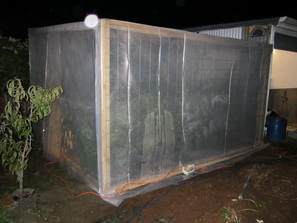
 RSS Feed
RSS Feed
